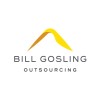Introduction
A consumer-facing business often faces a dilemma about whether to improve on customer experience management or cope with its own rising expectations. The glut of choice coaxes enterprises into self-indulgent, ultimately missing the point. While contemporaries continue to garner the benefits of listening to customers’ hidden feedback through key customer experience metrics, you fail to retain the most loyal customers.
“62% of enterprises see customer experience as a key differentiator”, Deloitte announced last year . Also, with omnichannel strategies to help the corporation retain 89% of its customers, businesses will now be redirecting a sumptuous amount of investment towards innovation relevant to customer experience.
Rendering exceptional customer service not only improves customer retention but also influences customer behaviour. Leveraging quality customer experience guarantees customer referrals and impactful word of mouth but can improving on customer experience help enterprises improve or double their revenue?
Can optimizing key metrics of customer experience lead to an increase in revenue? Can businesses take the risk to shift their focus from the price war to improving customer experience and winning in the long run?
Temkin Group recently made it public in a report that “focusing on CX improvement can double the revenue within 3 years”. It was also discovered through a study that “73% of buyers label customer experience as the biggest decision influencer when it comes to buying”.
To cultivate a unique customer experience that can drive sales and generate better revenues, it is indispensable to scrutinize processes and discover avenues that require improvement.
Table of Contents
- Key customer experience metrics that can prove to be beneficial are:
- Net Promoter Score
- Customer Satisfaction
- Customer Effort Score
- Customer Journey
- Churn Rate
Key customer experience metrics that can prove to be beneficial are:
- Net Promoter Score
- Customer Satisfaction
- Customer Effort Score
Also, two other key customer experience metrics that can be focussed on to double or improve the revenue are:
- Customer Journey
- Churn Rate
Net Promoter Score
A mathematical classification of customer brand loyalty based on input taken from customers on one single question. Net Promoter Score is a key customer experience metric because it assists businesses in understanding how likely their customers are to promote them. An immaculate NPS means customers are going to bring in more referrals, whereas a low NPS means customers will act as detractors.
How is NPS calculated?
Subtracting the Percentage of Detractors from the Percentage of Promoters will give you the Net Promoter Score, where the Percentage of Detractors is the percentage of people who answered the NPS Survey questions between 0-6. In contrast, the Percentage of Promoters is the percentage of people who answered the NPS Survey questions either 9 or 10.
Net Parameter Score
How will improving NPS help enterprises improve revenues?
⦁ Positive Word of Mouth: 84% of buyers agreed that they would promote and recommend businesses that provide quality customer experience. With word-of-mouth being the most effective way of marketing, enterprises are bound to register an uptick in their sales.
⦁ Fewer Detractors: An improved Net Promoter Score means fewer detractors. With the number of people rating the services low going down, you can expect an increase in brand value, leading to more visits and sales.
Customer Satisfaction
Customer Satisfaction is the most important customer experience metric, which is generated through the CSAT Survey. In the CSAT Survey, customers who have made any recent purchase or transacted recently are asked to answer a simple question like “How satisfied were you with your purchase today?”
How improving the CSAT Score can stir enterprises in the direction of improving revenues?
In a study, Harvard Business Review found that improving CSAT will help businesses retain 74% of customers for another year, leading to a substantial increase in revenue. The study also discovered customers with the best customer experiences spend 140% more compared to customers who had a poor experience, vindicating the fact that “improving on key customer experience metrics can help businesses double the revenue”.
Customer Effort Score
Studies show that enterprises with better Customer Effort Scores could have made 12 Billion dollars more in 2018. Customer Effort Score is generated through CES Surveys, where customers are asked to answer questions like “How much effort did you put in to get your transaction processed?” or “How easily were your requests handled?”.
How improving CES can help enterprises make more money?
Harvard Business Review has made it crystal clear that CES can predict customer retention and repurchasing probability effectively. With improved CES, enterprises will be able to cut their cost of customer acquisition as well. Customer Effort Score is also an effective prediction of customer loyalty. By streamlining processes and reducing redundancies, enterprises can render quality and easier transacting experience to customers and improve their CES.
Customer Journey
With market players relying on predictive personalization for catering highly customized services to customers, it is getting tough for new players to make their presence felt. With the increasing cost of customer acquisition, enterprises are being cornered and the only choice they are left with is customer retention.
Customer Journey Mapping is the only way out for corporations. With reliance on customer journey mapping, enterprises can discover loopholes and conceal them. By traversing processes and providing falling processes with robust support, companies can aim to improve the customer journey.
How improving Customer Journeys can help enterprises improve their revenue graph?
Since customer acquisition is getting expensive, enterprises can rely on retention to save acquisition funds and also increase revenue through repeat orders. A third-eye view of the customer journey can help companies discover touchpoints that are failing to provide optimum customer experience.
65% of buyers have agreed on the positive customer journey to be an effective decision-maker.
Churn Rate
The churn Rate can be best defined as the percentage of customers who decided to never again transact with your company. Churn Rate is a metric that fits aptly in both transactional businesses and subscription businesses.
How to calculate the Churn Rate?
The churn Rate for a business can be calculated by dividing the total number of lost customers in a month by the total number of customers at the beginning of the Month.
Churn Rate= Customers lost in a Month/Customers at the beginning of the Month.
How improving on Churn Rate will help businesses increase their revenue?
In a layman’s language improving on churn rate means “losing fewer customers in a specified period”. With less number of customers saying goodbye to your businesses, the probability of them repurchasing or paying the subscription fee increases. The increase in the number of repurchases or active monthly subscribers will lead to businesses making more money.
Conclusion
With 50% of companies planning to invest heavily in customer experience, consumers are going to be spoilt with choices. Controlling the churn rate, improving the customer journey, perfecting NPS, acing CSAT, and mastering CES can usher businesses into an era of unprecedented growth and untamable brand loyalty.




